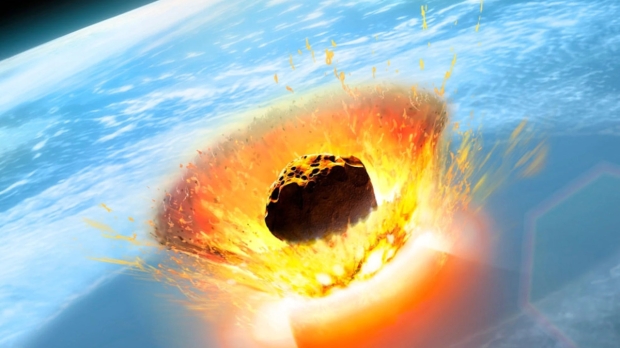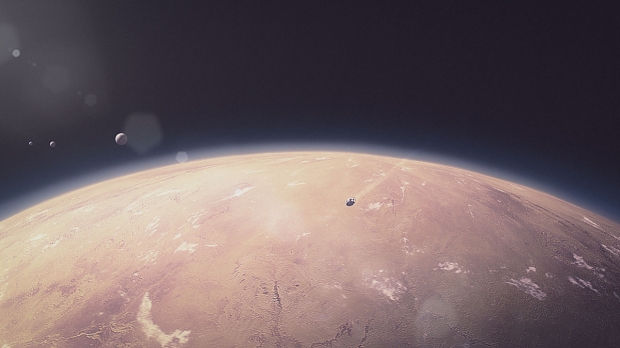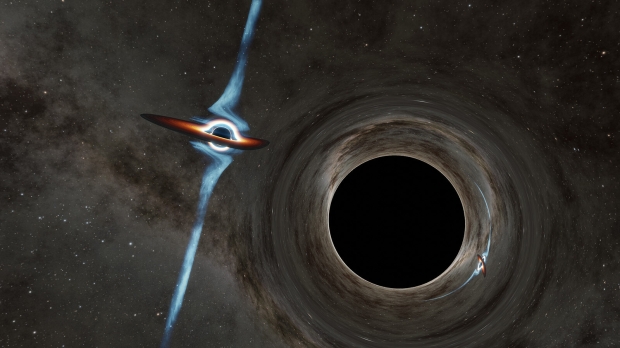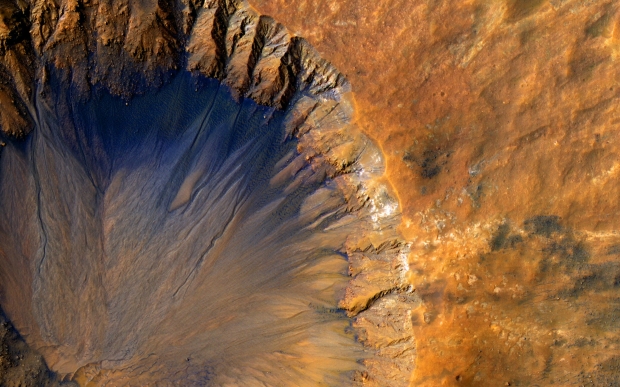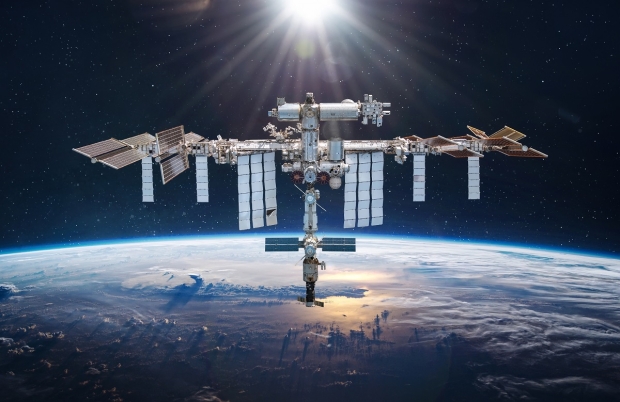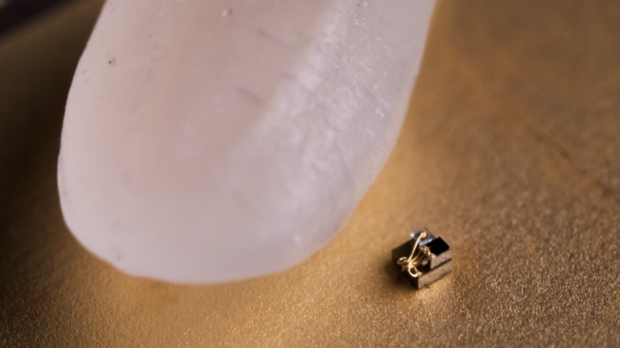Science, Space, Health & Robotics News - Page 182
We now know exactly when the dinosaurs went extinct
A study on the extinction event titled "The Mesozoic terminated in boreal spring" has been published in the journal Nature.
An international team of researchers has determined that the meteorite that crashed into Earth and wiped out the dinosaurs struck during the boreal (relating to the northern hemisphere) springtime. Around 66 million years ago, the meteorite crashed into Earth, creating the Chicxulub crater on what is now known as the Yucatan peninsula in Mexico, wiping out all non-avian dinosaurs, pterosaurs, ammonites, and most marine reptiles but allowing mammals, birds, crocodiles, and turtles to survive.
The team was able to study fossilized fish, which were buried by enormous waves resulting from the meteorite impact. The fossils were remarkably well preserved, with almost no geochemical degradation of their bones observed. Using the particle accelerator at the European Synchrotron Radiation Facility (ESRF), the team analyzed the bones of the fish.
Continue reading: We now know exactly when the dinosaurs went extinct (full post)
'Tatooine-like' planet would have two sunsets for anyone on it
A study on the latest observations of the planet titled "BEBOP III. Observations and an independent mass measurement of Kepler-16 (AB) b - the first circumbinary planet detected with radial velocities" has been published in the journal Monthly Notices of the Royal Astronomical Society.
A team of researchers led by the University of Birmingham have used the 193-centimeter telescope at the Observatoire de Haute-Provence in France to observe the rare exoplanet. The planet is called Kepler-16b and previously had only been observed by the Kepler space telescope. It is located roughly 245 light-years away from Earth and orbits around two stars, which both orbit each other to create a binary star system.
Existing in such a system means that any observer on the surface of Kepler-16b would witness two sunsets (and sunrises), as you would on the planet Tatooine in the Star Wars universe. Kepler-16b was the fourth confirmed circumbinary planet (orbiting two stars) found at the time of discovery in 2011, with nine currently known at the time of writing.
Continue reading: 'Tatooine-like' planet would have two sunsets for anyone on it (full post)
These two enormous black holes are doomed to collide
A study of the black holes titled "The Unanticipated Phenomenology of the Blazar PKS 2131-021: A Unique Supermassive Black Hole Binary Candidate" has been published in the journal The Astrophysical Journal Letters.
Researchers from the California Institute of Technology (Caltech) have observed two supermassive black holes orbiting one another every two years, nine billion light-years away. Both are hundreds of millions of times greater in mass than our Sun and are separated by about fifty times the distance between our Sun and Pluto. They are predicted to merge in approximately ten thousand years, which will send massive gravitational waves across the universe.
The black holes are found within a blazar dubbed PKS 2131-021, a type of quasar. Quasars are a type of active galactic nuclei (AGN) where the supermassive black hole(s) within siphons material from the accretion disc encircling it and shoots out massive jets. PKS 2131-021 marks the second known candidate for a pair of supermassive black holes caught merging, with the first candidate pair being the quasar OJ 287, whose black holes orbit one another every nine years instead of two.
Continue reading: These two enormous black holes are doomed to collide (full post)
First artwork to be put on the Moon unveiled, see it here
The artwork was made by Sacha Jafri, who made the world's largest painting on canvas over seven months during the COVID-19 pandemic.
The artwork to be placed on the Moon was revealed at The USA Pavilion at Expo 2020 Dubai, the United Arab Emirates, on February 23rd, 2022. It will make its way to the lunar surface as part of NASA's Commercial Lunar Payload Services (CLPS) initiative, marking the first commercial lunar mission under the initiative.
The mission has been brought together by Selenian, a company specializing in the curation of art in space. Selenian is working with Spacebit, a company developing space exploration technology, and Astrobotic Technology Inc., which provides end-to-end delivery services for Moon-bound payloads, to put the artwork on the Moon. The landing site for Jafri's artwork will become a world heritage landmark, to be preserved forever.
Continue reading: First artwork to be put on the Moon unveiled, see it here (full post)
Breakthrough quantum sensor allows high-res mapping of the underground
A study on the new technology titled "Quantum sensing for gravity cartography" has been published in the journal Nature.
Researchers from the University of Birmingham have made a breakthrough in mapping the underground using a quantum gravity gradiometer. The technology was developed under contract for the Ministry of Defense as part of the UKRI-funded Gravity Pioneer project and was used to locate a tunnel buried a meter below ground in real-world conditions.
The sensor detects variations in microgravity using the principles of quantum physics and has profound implications for several fields, including national security. The technology opens the commercial pathways to reduce costs and delays associated with construction projects, assist in studying and predicting natural phenomena such as volcanoes, and uncover hidden resources and structures such as precious archaeological finds without risking damage through excavation.
Continue reading: Breakthrough quantum sensor allows high-res mapping of the underground (full post)
Satellites photograph Russia's military activity, sparking concern
Russia's recent military actions have sparked global concern as the President of Russia Vladimir Putin says that he has sent troops into Ukraine under the banner of "peacekeeping".
As nation's around the world watch the moves made by Russia and the seemingly contradictory statements coming from the country's leader, satellites orbiting the planet are photographing the region in question. Satellites operated by Maxar Technologies snapped images of military activity across several locations such as Belarus, Crimea and western Russia.
Russia began its movement into Ukraine on Monday, February 22 and in response to the movement President Joe Biden issued a statement that describes the situation as "the beginning of a Russian invasion of Ukraine," and went on to authorize new sanctions on Russia as well as sending US troops to the Baltics. The images showcase several helicopters, ground attack aircrafts, air defense units, and vehicles.
Continue reading: Satellites photograph Russia's military activity, sparking concern (full post)
Student tries making rocket fuel on dorm stovetop, explodes kitchen
The BYU Police Department shared a story on its Facebook page that detailed a DIY rocket fuel project that went up in flames in a dorm kitchen.
The BYU Police Department begins by dubbing the story "Rocket Man", and then states that officers and firefighters were called to respond to a fire alarm that was triggered at Heritage Halls Building 4. When the emergency responders arrived at the scene, they saw that the fire sprinklers had been activated and that the walls and stovetop were covered in flames.
It was later discovered that the resident of the room was attempted to create his own rocket fuel on the stovetop, and the extremely flammable mixture exploded. The police report that no one was injured from the incident, but some residents will be "displaced due to the flooding caused by this kitchen chemist". The police gave a public reminder to keep the experiments in the laboratory and make sure that trained professionals observe them.
Continue reading: Student tries making rocket fuel on dorm stovetop, explodes kitchen (full post)
ISS astronaut uses robotic arm to catch incoming an spacecraft
The International Space Station (ISS) recently docked a spacecraft with the help of a robotic arm controlled by a NASA astronaut.
In a new video posted to the International Space Station Twitter account, the Northrop Grumman Cygnus cargo spacecraft that launched on Saturday from NASA's Wallops Flight Facility on Wallops Island, Virginia, arrived at the ISS on Monday and was met with the Canadian Space Agency's (CSA) Canadarm2.
The above video showcases the Canadarm2 slowly moving out to be connected with the cargo ship. NASA astronaut Raja Chari is operating the arm from within the ISS, and once the cargo ship was connected to the arm, Chari proceeded to rotate and dock the spacecraft on the station's Unity module. At the moment, the ISS has five spacecrafts docked at its port, and they are as follows; Cygnus-17, SpaceX Crew Dragon, Russia's Soyuz MS-19, Progress 79, and Progress 80.
Continue reading: ISS astronaut uses robotic arm to catch incoming an spacecraft (full post)
World's tiniest battery could power computers the size of a dust speck
A study on the battery titled "On-Chip Batteries for Dust-Sized Computers" has been published in the journal Advanced Energy Materials.
Researchers from the Chemnitz University of Technology have developed the world's smallest battery, inspired by the Swiss roll dessert. They layered current collectors and electrode strips onto a tensioned water surface, which could then self-assemble through a "micro-origami" process into what they describe as a "self-wound cylinder micro-battery."
The battery is one square millimeter in size, roughly the size of a speck of dust. With a minimum energy density of 100 microwatt hours per square centimeter, the researchers say the battery could be used to power tiny computer chips used in biosensors in the human body. They claim their battery could power the world's smallest computer chips for around ten hours, expanding the applications of biosensors that typically rely on harvesting energy through other means.
Continue reading: World's tiniest battery could power computers the size of a dust speck (full post)
New study finds Ivermectin ineffective in treating severe COVID
The study is titled "Efficacy of Ivermectin Treatment on Disease Progression Among Adults With Mild to Moderate COVID-19 and Comorbidities" and has been published in the journal JAMA Internal Medicine.
Malaysian researchers conducted a randomized clinical trial to assess the efficacy of ivermectin treatment across twenty public hospitals and a COVID-19 quarantine center in Malaysia between May 31st and October 25th, 2021. Of 241 patients that received ivermectin, 52 developed severe COVID-19, compared to 43 developing severe COVID-19 out of 249 patients that did not receive ivermectin.
"In this randomized clinical trial of high-risk patients with mild to moderate COVID-19, ivermectin treatment during early illness did not prevent progression to severe disease. The study findings do not support the use of ivermectin for patients with COVID-19," the study concluded.
Continue reading: New study finds Ivermectin ineffective in treating severe COVID (full post)


